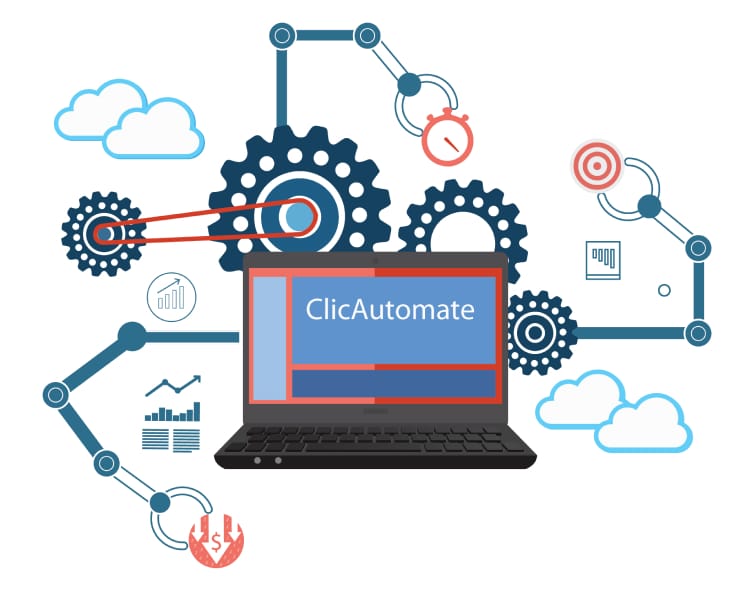Student Feedback
CTFL-2018: ISTQB Certified Tester Foundation Level 2018 Certification Video Training Course Outline
Introduction
2018: Fundamentals of Testing
2018: Testing Throughout The Sof...
2018: Static Testing
2018: Test Design Techniques
Test Management
2018: Tool Support For Testing
Introduction
CTFL-2018: ISTQB Certified Tester Foundation Level 2018 Certification Video Training Course Info
Foundations of Testing Excellence: CTFL-2018 Certification Course
Learn foundational software testing principles, techniques, and ISTQB CTFL-2018 certification skills for professional growth.
What You Will Learn From This Course
• Understand the fundamental principles and objectives of software testing
• Learn the importance of testing in the software development lifecycle
• Gain knowledge of testing levels, types, and test processes
• Understand the role of testers and their mindset in achieving software quality
• Learn about static testing and how reviews contribute to quality assurance
• Understand the various test design techniques used to derive effective test cases
• Develop skills in test management, planning, estimation, and risk-based testing
• Learn how to select and apply tools that support the testing process
• Acquire the knowledge and confidence to successfully pass the CTFL-2018 exam
• Understand real-world applications of testing principles in projects of different sizes and domains
Learning Objectives
The primary goal of this course is to build a deep understanding of software testing fundamentals in alignment with the ISTQB Certified Tester Foundation Level 2018 syllabus. By the end of the training, participants will be able to explain the purpose of testing and how it contributes to achieving software quality. They will understand how testing fits within different software development models and how to apply testing throughout the product lifecycle.
Learners will gain the ability to distinguish between test levels and types, apply static testing techniques, and design effective test cases using black-box, white-box, and experience-based techniques. The course will strengthen the participant’s ability to manage test activities, plan and monitor progress, estimate effort, and assess risks. Another important learning objective is understanding the role of testing tools and how they integrate with organizational processes.
By achieving these objectives, participants will not only be prepared to take the official CTFL-2018 certification exam but also to perform testing tasks more efficiently in their professional environments. They will develop analytical thinking and a structured approach to problem-solving, which are crucial traits for successful testing careers.
Target Audience
This course is designed for individuals seeking a comprehensive understanding of software testing principles and practices. It is suitable for new entrants in the testing profession who want to establish a strong foundation and for professionals who aim to formalize their existing testing knowledge through an internationally recognized certification.
Software testers, QA engineers, developers, and team leads will benefit from the systematic structure of this course, which provides a clear view of how testing contributes to product reliability and quality improvement. Project managers and business analysts will find it valuable for understanding how testing aligns with project goals and how to effectively collaborate with testing teams.
The course is also suitable for IT professionals transitioning from development or operations into testing roles. Even students and recent graduates interested in starting a career in quality assurance will find this course valuable, as it provides a globally recognized credential and an introduction to professional testing concepts. By addressing both technical and managerial perspectives, the course ensures that all participants, regardless of their background, gain a well-rounded understanding of testing practices that can be applied in any project environment.
Overview
Software testing plays a critical role in ensuring that applications perform according to their intended functionality and meet the user’s expectations. The CTFL-2018 course offers a structured learning path to master the fundamental aspects of testing based on the internationally accepted ISTQB syllabus. The course starts by exploring the meaning and purpose of testing, emphasizing how it prevents defects and improves software quality. It introduces the principles that guide effective testing, including the understanding that exhaustive testing is impossible and that early testing helps reduce the overall cost of defects.
Participants will explore the testing process, from planning and design to execution and closure. This includes learning how to document test cases, track defects, and measure test progress. The course provides a clear explanation of test levels such as component, integration, system, and acceptance testing. It also covers test types, including functional, non-functional, and regression testing, helping learners understand how to apply each type appropriately in different project contexts.
A major section of the course focuses on static testing, where students will learn about reviews and static analysis techniques. Through this, they will understand how early detection of issues in requirements and design documents can prevent costly defects in later stages. Participants will explore different types of reviews, such as informal reviews, walkthroughs, technical reviews, and inspections, along with their objectives and benefits.
Test design techniques form another essential part of this course. Learners will understand how to use equivalence partitioning, boundary value analysis, decision tables, state transition testing, and other specification-based approaches. Structure-based and experience-based techniques are also explained, offering a comprehensive understanding of how to derive efficient test cases from different perspectives.
The management component of the course introduces the organization of test activities, including planning, estimation, and monitoring. Participants will explore risk-based testing and learn how to prioritize efforts to achieve the greatest impact on product quality. Configuration management, defect tracking, and reporting are discussed to ensure a holistic understanding of how testing integrates with broader project management processes.
Finally, the course introduces the role of test tools, covering test management tools, execution tools, performance tools, and static analysis tools. Learners will understand the advantages and potential pitfalls of using automation and will gain insights into how tools can be effectively introduced and maintained within an organization. The training concludes with a preparation session for the CTFL-2018 exam, where participants will consolidate their knowledge and practice answering questions that reflect real exam conditions.
Through structured sessions, discussions, and practical examples, the course provides not only theoretical knowledge but also the mindset required for effective testing. Participants learn to think critically, communicate findings clearly, and approach testing as a creative and analytical process that contributes directly to business success. The goal is to produce professionals who not only understand the mechanics of testing but also its purpose, principles, and place in modern software development.
Prerequisites
There are no mandatory prerequisites to enroll in this course, making it accessible to individuals from diverse educational and professional backgrounds. However, having a general understanding of software development concepts, programming, or project management processes will help participants grasp the material more quickly. Basic familiarity with software life cycles, such as Agile or Waterfall, can also provide useful context for the testing concepts introduced in this course.
Those who already have some experience in software projects will be able to connect the theoretical concepts with real-world situations, enhancing the learning experience. Individuals without any previous exposure to testing will find that the course progressively builds their knowledge from the ground up, introducing every term and concept in a structured manner.
A willingness to engage with technical and analytical concepts, an attention to detail, and an interest in software quality are the most important traits for success in this course. With consistent participation and study, any motivated learner can complete the training successfully and be well-prepared to attempt the ISTQB CTFL-2018 certification exam.
Course Modules / Sections
The CTFL-2018 training program is structured into a series of comprehensive modules designed to align with the official ISTQB syllabus. Each module progresses logically from foundational theory to more advanced application. The intention is to ensure that learners develop both conceptual clarity and practical insight into how testing is performed in professional environments.
The first module introduces the fundamentals of testing, exploring why testing is necessary and what role it plays in achieving software quality. Participants examine the core definitions and objectives of testing, the seven principles that guide effective testing, and the key stages of the fundamental test process. This initial section builds the mindset of a tester and establishes the reasoning behind why testing is an integral part of software engineering rather than an isolated activity.
The second module focuses on testing throughout the software development lifecycle. Here, learners study different software development models such as waterfall, V-model, iterative, and agile approaches, and understand how testing integrates within each. The discussion includes the different levels of testing—component, integration, system, and acceptance—and the major test types, including functional, non-functional, and regression testing. The module helps learners appreciate how testing adapts to the specific context of each project and ensures that testing objectives remain aligned with business goals.
The third module explores static testing, where testing activities are carried out without executing the code. This section includes document reviews, walkthroughs, technical reviews, and inspections. Learners also gain insight into static analysis tools and how they identify potential defects in code or documentation before dynamic testing begins. By mastering static testing, participants understand how early defect detection leads to cost savings and improved quality.
The fourth module is dedicated to test design techniques. It explains how to derive test cases from different sources of information, such as requirements or specifications. This module covers specification-based techniques like equivalence partitioning, boundary value analysis, decision table testing, state transition testing, and use case testing. Structure-based techniques such as statement testing, decision testing, and condition coverage are also discussed, along with experience-based techniques like exploratory testing and error guessing. The module emphasizes choosing the right technique for the right context.
The fifth module addresses test management. Participants learn how to plan, estimate, organize, and monitor testing activities. They explore risk-based testing and how to prioritize tests based on likelihood and impact of failure. Configuration management and defect management processes are examined in depth, ensuring learners understand how to maintain traceability and control across test artifacts.
The sixth module focuses on tool support for testing. Participants learn about various categories of tools, including test management tools, test execution tools, performance testing tools, and defect tracking tools. The section also covers the factors influencing tool selection, successful implementation, and long-term maintenance. It helps learners understand both the advantages and challenges of tool adoption.
The seventh and final module is the preparation phase. Here, all topics are consolidated, and learners review key concepts through case studies and mock scenarios. The aim is to strengthen understanding and build confidence for real-world application and examination readiness.
Key Topics Covered
The course covers a wide range of essential topics derived directly from the CTFL-2018 syllabus to ensure learners achieve complete competency in foundational testing practices.
The initial topics center around understanding what testing is and why it is needed. Learners explore the reasons behind software defects, how defects originate, and the role of testing in mitigating these risks. The section also highlights the importance of testing in achieving stakeholder confidence and delivering reliable software products. The seven principles of testing are discussed in detail, helping participants internalize concepts such as the impossibility of exhaustive testing, the benefits of early testing, and the influence of context on test strategy.
In the section on testing in the lifecycle, learners are introduced to various software development methodologies and how testing activities are mapped within them. They gain a practical understanding of how testing is organized at different levels, including component testing, where individual units are verified; integration testing, which examines interactions between modules; system testing, which validates end-to-end functionality; and acceptance testing, which ensures that the system meets user requirements.
The static testing topics highlight the process of reviewing work products such as requirement documents, design specifications, and code segments. Participants learn the roles involved in reviews, including author, reviewer, moderator, and scribe. They also explore static analysis tools that assist in identifying vulnerabilities, coding standard violations, or incomplete requirements.
When studying test design techniques, learners engage deeply with black-box, white-box, and experience-based approaches. They learn how to identify input ranges and expected outputs through equivalence partitioning and boundary value analysis. Decision tables are introduced to handle combinations of conditions, while state transition testing demonstrates how system behavior can be verified across different states. Structure-based techniques focus on understanding internal logic and code paths, while experience-based techniques use intuition and knowledge of past defects to enhance coverage.
In the area of test management, participants learn how to plan a testing project, define its scope, allocate resources, and manage timelines. They explore risk-based approaches that align testing priorities with business impact. Test progress monitoring and reporting methods are discussed to ensure transparency and accountability. Configuration management and incident management processes are also detailed, providing insight into maintaining consistency across versions and efficiently handling reported defects.
The tool support section expands on how various categories of tools contribute to different testing activities. Participants examine how test management tools assist with planning and reporting, how test execution tools facilitate automation, and how performance testing tools help evaluate system behavior under stress conditions. Defect tracking tools are also introduced to demonstrate how issues are recorded, monitored, and resolved.
These topics are taught progressively to help learners develop a holistic understanding of software testing as a professional discipline. Each subject is approached not only from a theoretical perspective but also from the practical application that testers face in real projects.
Teaching Methodology
The teaching methodology for this course emphasizes comprehension, application, and retention. The learning process is built around interaction, participation, and practice rather than passive instruction. The course structure ensures that every theoretical concept is immediately supported by practical examples or group discussions.
At the start of the training, participants are introduced to foundational concepts through instructor-led discussions that clarify terminology and establish a common understanding of testing principles. Real-world examples are used to demonstrate how theoretical ideas apply to practical testing scenarios. This approach helps learners connect abstract principles to tangible experiences.
Practical exercises are a major part of the teaching method. Participants are given specifications or code snippets to analyze and are guided through the process of creating test cases, identifying defects, or conducting reviews. By performing these activities, learners not only reinforce what they have learned but also develop hands-on confidence in applying test design techniques.
The methodology also includes collaborative learning, where participants engage in group exercises to simulate team-based environments. In these exercises, learners assume different roles such as tester, developer, or reviewer to experience how collaboration and communication contribute to the success of a testing project.
Case studies and industry examples are used to highlight how testing fits into different types of projects, from small applications to enterprise systems. These examples demonstrate the diversity of testing challenges and how the same principles can be adapted to various contexts.
Instructors also incorporate conceptual mapping and scenario-based explanations to help participants visualize the testing process. This ensures that learners can see how individual activities like planning, execution, and defect reporting connect to the overall lifecycle.
Periodic reviews and discussions are conducted at the end of each module to reinforce retention. Learners summarize key takeaways in their own words, which strengthens memory and ensures understanding. The focus remains on practical applicability rather than memorization.
The training environment encourages participation, where learners are invited to share their perspectives, discuss problems, and analyze solutions collectively. The goal is to cultivate a mindset where testing is seen as both a technical and analytical discipline that adds measurable value to a project.
The final phase of teaching involves mock sessions and practice scenarios that mirror professional testing environments. These simulations prepare participants for real-world challenges and develop their ability to think critically under time constraints. By the end of the course, learners not only understand theoretical aspects but also possess the confidence to execute testing tasks effectively in a professional setting.
Assessment & Evaluation
Assessment in this course is designed to measure both theoretical understanding and practical application. Evaluation occurs continuously throughout the training rather than being limited to a final test. This ensures that learners receive feedback at each stage of their progress.
During the initial modules, short exercises and scenario analyses are used to evaluate comprehension. Learners are assessed on their ability to define concepts accurately, explain the reasoning behind test activities, and apply principles such as the seven testing fundamentals. The instructor provides feedback to clarify misconceptions and reinforce correct understanding.
As the course advances into applied topics, participants are evaluated through hands-on assignments. These tasks may involve designing test cases from specifications, identifying missing requirements, performing static reviews, or analyzing defects. The assessment criteria focus on accuracy, completeness, logical reasoning, and adherence to testing best practices.
Group exercises contribute to evaluation by assessing how well participants collaborate and communicate within a testing context. Instructors observe team discussions, review outcomes, and provide insights into how group dynamics influence testing effectiveness.
Formative assessments are conducted after each module in the form of mini reviews or reflection activities. Learners summarize key lessons and identify areas that need reinforcement. This reflective approach helps participants track their learning journey and recognize their strengths and weaknesses.
In the later stages of the course, simulated testing scenarios are used for comprehensive assessment. Participants are presented with project case studies and must plan, design, and analyze testing tasks as they would in a real project. These evaluations focus on practical skill development and decision-making ability.
To prepare participants for the certification exam, multiple timed mock tests are conducted under exam-like conditions. These assessments help learners become familiar with the structure and pacing of the exam and identify areas that need improvement. After each mock test, instructors provide detailed feedback, discussing the reasoning behind correct and incorrect answers.
The final evaluation combines theoretical comprehension, practical application, and participation. Learners who successfully demonstrate understanding across all dimensions are considered ready to pursue the CTFL-2018 certification. The emphasis of the evaluation process is not only on exam readiness but also on developing the professional competency required for effective testing in real projects.
By integrating continuous feedback and practical evaluation, the course ensures that learners achieve lasting mastery of testing principles and are equipped to contribute confidently to software quality assurance efforts in any organizational context.
Benefits of the Course
The CTFL-2018 training course offers a wide range of benefits that extend beyond exam preparation, providing learners with both professional and practical advantages. This course lays the foundation for a successful career in software testing by establishing a clear understanding of testing principles, processes, and best practices. Participants gain structured knowledge aligned with global standards, allowing them to apply consistent methods across diverse industries and organizations.
One of the most significant benefits of this course is the acquisition of an internationally recognized certification credential. The ISTQB Certified Tester Foundation Level certification is accepted across multiple countries and industries, making it a valuable asset for career growth. It enhances the credibility of professionals and demonstrates their commitment to maintaining quality and excellence in software development. Employers value certified professionals because they bring proven understanding and standardized knowledge to testing projects.
The course also provides learners with practical insight into how testing supports project success. By exploring various testing levels and types, participants learn how to align testing activities with project goals and product requirements. They understand the importance of early defect detection and how it contributes to reducing cost, time, and effort in software development. This understanding helps professionals make informed decisions and prioritize testing activities effectively.
Another major benefit is the development of analytical and critical thinking skills. Testing requires a structured approach to identifying defects, evaluating risks, and assessing quality. Through hands-on exercises and practical scenarios included in the course, learners refine their ability to analyze complex situations and apply appropriate testing techniques. This skill is valuable not only in testing roles but also in other IT-related positions where problem-solving and logical reasoning are essential.
The course also improves communication and collaboration abilities. Since testing involves interacting with developers, managers, and stakeholders, testers must communicate findings clearly and constructively. By engaging in group discussions, reviews, and collaborative exercises, learners develop the ability to articulate testing insights effectively. This contributes to smoother coordination and a more efficient workflow in multidisciplinary teams.
For individuals aiming for professional advancement, the CTFL-2018 certification opens opportunities for higher-level roles. Once certified, professionals can pursue advanced ISTQB certifications such as the Test Analyst, Technical Test Analyst, or Test Manager levels. These advanced certifications build on the foundation established in the CTFL course, leading to specialized expertise and leadership opportunities.
Organizations also benefit from having employees trained under this program. Certified testers bring consistency, accuracy, and a deeper understanding of quality assurance to projects. They are better equipped to implement structured processes, improve documentation, and identify process improvements. This leads to a more mature testing function within the company, reduced defect leakage, and improved overall product quality.
Another benefit lies in the flexibility and adaptability the course provides. The knowledge gained can be applied across different domains, technologies, and development methodologies, including agile, waterfall, or hybrid models. Participants learn universal concepts that remain relevant regardless of the specific tools or platforms used in their organizations.
Additionally, the course fosters a mindset of continuous improvement and lifelong learning. Testing is a field that evolves with technological changes, and understanding foundational principles allows testers to adapt quickly to new tools, techniques, and methodologies. The CTFL-2018 course instills the discipline and curiosity required to keep up with emerging trends in quality assurance.
Ultimately, this course provides personal and professional growth by developing confidence in performing testing tasks, improving employability, and building the foundation for future specialization in the field of software quality.
Course Duration
The CTFL-2018 training course is structured to deliver a balanced blend of theoretical understanding and practical application within a manageable timeframe. The total duration may vary depending on the mode of delivery and the depth of content coverage, but most training programs are designed to be completed within three to five days of intensive instruction. This duration is sufficient for learners to grasp all the syllabus topics comprehensively while engaging in interactive exercises and discussions.
In an instructor-led classroom setting, the course is typically conducted over four full days. Each day is divided into sessions that progressively build on one another, starting from the basics of testing and advancing to more complex topics such as test management and tool support. Each session is designed to include explanation, discussion, and hands-on application. Short breaks between modules ensure that learners can reflect on the content and prepare for subsequent topics.
For organizations or individuals preferring an extended learning schedule, the same course can be delivered over several weeks in shorter sessions. This approach is ideal for working professionals who want to balance their training with daily responsibilities. The modular structure of the course allows flexibility, enabling learners to complete each section at their own pace while maintaining alignment with the official syllabus.
Online or virtual versions of the course often include recorded lectures, interactive sessions, and virtual labs. In such formats, the duration may extend slightly to accommodate self-paced learning and practice. Learners are encouraged to dedicate additional time outside the formal training sessions for self-study and review. Spending one to two hours per day revising key concepts and practicing sample scenarios significantly enhances retention and exam readiness.
The course duration is also influenced by the inclusion of mock exams and review sessions. Most training programs allocate time for participants to complete at least one or two full-length mock exams, followed by detailed feedback discussions. This additional time is crucial for solidifying understanding and identifying areas that may require further attention before taking the official certification test.
In a corporate training environment, instructors may customize the duration based on the participants’ prior experience. Beginners may require the full five days, while experienced testers may complete the training in three days if the focus is on revising known concepts and addressing the updates in the 2018 syllabus. Regardless of the schedule, the goal remains consistent: to ensure that every learner achieves a thorough understanding of all syllabus topics and develops the competence required for real-world testing challenges.
Tools & Resources Required
To maximize learning effectiveness, the CTFL-2018 course incorporates several tools and resources that support both theoretical study and practical exercises. These resources ensure that participants can engage with real-world scenarios and develop hands-on familiarity with testing environments.
The most essential resource for the course is the official CTFL-2018 syllabus document. This serves as the foundational reference for all learning objectives, terminology, and knowledge areas covered during the training. Participants are encouraged to keep a copy for review and self-assessment throughout the course. A glossary of software testing terms is also provided to ensure consistency in language and understanding.
During practical sessions, learners may use common productivity tools such as spreadsheets and text editors to create test cases, track defects, and record observations. These simple tools help learners understand the underlying concepts of test documentation before transitioning to more advanced automated systems.
To introduce participants to industry practices, the course may include demonstrations of popular test management and defect tracking tools. Examples of such tools include Jira, TestLink, and Zephyr for managing test cases, and Bugzilla or Mantis for defect reporting. These tools are widely used in the software industry and provide learners with a sense of how professional test teams organize and monitor their activities.
For exercises related to static testing, participants may use document review templates and sample project artifacts such as requirement specifications or design documents. These materials are used to simulate review sessions where learners identify issues, suggest improvements, and experience the review process firsthand.
In modules related to test design techniques, resources may include example specifications, flowcharts, or sample code snippets that participants analyze to derive test conditions and expected results. These materials allow learners to apply theoretical methods to realistic scenarios and reinforce their understanding through practice.
If the course includes demonstrations of automated testing concepts, basic exposure to automation frameworks or record-and-playback tools can be provided. The aim is not to train learners in tool operation but to help them understand how tools support different stages of the testing process.
Supplementary learning materials such as presentation slides, study guides, and sample exam questions are also part of the course package. These resources help learners review key concepts and assess their understanding at various stages of the training.
An environment that supports collaboration, whether physical or virtual, is equally important. Group discussions, team exercises, and peer reviews require communication platforms or shared workspaces. In online sessions, tools like Zoom, Microsoft Teams, or Google Meet are used for live instruction and interaction, while shared drives or collaboration boards are used for joint activities.
Reliable internet access, a personal computer or laptop, and an updated web browser are required for online participation. Learners should also have access to a note-taking tool to record insights and feedback during exercises.
For self-study after the course, additional resources such as recommended textbooks, whitepapers, and online tutorials can further reinforce the topics learned. These materials encourage continued learning and help participants explore advanced aspects of software testing once they have mastered the foundation.
By combining these tools and resources, the CTFL-2018 training ensures an engaging and immersive learning experience. Participants gain practical exposure to real testing tools and develop the confidence to apply their knowledge effectively in professional settings.
Career Opportunities
The CTFL-2018 certification provides professionals with a wide range of career opportunities within the software development and quality assurance sectors. It is recognized as a global standard for foundational testing knowledge, making it an excellent entry point for individuals who wish to begin or advance their careers in software testing. The certification validates essential skills that are applicable across multiple roles, industries, and technologies, positioning certified individuals as competent contributors to any software project.
One of the most direct career paths available to certified professionals is that of a Software Test Engineer or Quality Assurance (QA) Analyst. These roles are responsible for executing test cases, reporting defects, and ensuring that software products meet specified requirements. Certified testers possess the technical knowledge and structured thinking necessary to perform these duties efficiently. Their familiarity with fundamental testing techniques, defect management, and test documentation enables them to integrate smoothly into both agile and traditional project teams.
With experience, professionals can progress to more advanced roles such as Test Lead or Test Manager. These positions involve planning and coordinating testing activities, managing test teams, and ensuring that testing aligns with business goals. The foundation established in the CTFL-2018 course allows individuals to build on their skills through advanced certifications and on-the-job experience, preparing them to handle complex project responsibilities and leadership challenges.
Specialization is another path open to certified testers. Many choose to focus on areas such as automation testing, performance testing, or security testing. The foundational knowledge from the CTFL-2018 program helps them transition into these specialized domains more effectively because they already understand the principles that underpin test design and execution. With additional training in relevant tools and frameworks, they can become experts in automation technologies like Selenium or performance testing tools like JMeter, expanding their career options significantly.
Beyond traditional QA roles, CTFL-certified professionals often find opportunities in business analysis, project management, and software development. Their understanding of quality principles and testing methodologies enables them to contribute to improving software processes, refining requirements, and ensuring product reliability. Many organizations value testers who can bridge the gap between technical and business teams, making these professionals valuable assets in cross-functional environments.
The certification also enhances job mobility across industries. Software testing is essential in sectors such as finance, healthcare, telecommunications, education, and e-commerce. Certified professionals can work in any of these areas, adapting their testing expertise to the specific challenges and regulations of each domain. This flexibility provides stability and long-term career security in a constantly evolving job market.
For freelancers and consultants, the CTFL-2018 certification adds credibility and trust. Clients and employers are more likely to engage professionals with verifiable proof of competence, especially when quality assurance plays a critical role in project success. The certification helps independent professionals demonstrate their commitment to maintaining global testing standards and delivering reliable results.
Career progression is not limited to testing roles alone. The analytical mindset, attention to detail, and process-oriented approach developed through the CTFL-2018 course are valuable in various technology-driven positions. Professionals who begin in testing often transition to roles such as product owner, release manager, or even software architect, applying their deep understanding of quality and risk management to broader organizational functions.
In terms of salary prospects, certified testers generally earn higher compensation compared to non-certified peers. The credential signifies a verified level of knowledge that employers are willing to reward, especially in competitive markets. Moreover, as organizations increasingly adopt structured quality assurance practices, the demand for certified testers continues to grow.
The global recognition of the ISTQB framework further enhances career opportunities internationally. Professionals holding the CTFL-2018 certification can apply for roles in multinational corporations or pursue job opportunities abroad. The standardization of terminology and testing processes ensures that their skills are relevant and transferable across borders, giving them access to a broader professional landscape.
For those interested in continuous professional development, the CTFL-2018 certification acts as a foundation for advanced levels such as Test Analyst, Technical Test Analyst, and Test Manager. These higher certifications enable individuals to specialize and take on more strategic and technical responsibilities. Over time, certified testers can move into senior leadership positions where they oversee testing operations, define organizational quality strategies, and influence product delivery standards at the enterprise level.
Ultimately, the certification paves the way for a rewarding and dynamic career in the ever-growing field of software quality assurance. The demand for reliable, well-tested software continues to rise, and professionals equipped with the CTFL-2018 certification are well-positioned to meet this demand.
Conclusion
The CTFL-2018 training course represents a comprehensive learning experience that builds a strong foundation for individuals aspiring to excel in software testing and quality assurance. It goes beyond theoretical instruction, providing a structured framework that develops analytical ability, process understanding, and professional discipline. Through this course, participants gain a clear understanding of the principles that drive high-quality software delivery, preparing them to contribute meaningfully to diverse projects and organizational goals.
From a career perspective, the CTFL-2018 certification serves as a launching point for higher professional achievements. It equips learners with the knowledge and confidence to pursue specialized or managerial roles in quality assurance. It also builds a strong base for advanced certifications that deepen expertise in technical, analytical, or leadership areas.
Organizations benefit equally from employing certified professionals. The consistent knowledge base, standardized practices, and process discipline introduced through this training lead to improved software quality, reduced risk, and enhanced project outcomes. Teams led by certified testers often demonstrate greater efficiency, stronger collaboration, and a higher commitment to quality standards.
The CTFL-2018 course also promotes lifelong learning and adaptability. In a technology-driven world where methodologies and tools evolve rapidly, professionals who master foundational concepts can more easily learn and apply emerging practices. This flexibility ensures sustained career relevance and personal development throughout one’s professional journey.
In essence, the CTFL-2018 training and certification embody a balanced combination of theory, application, and professional growth. It empowers individuals to deliver quality with confidence, helps organizations achieve greater software reliability, and contributes to the overall advancement of the software industry.
Enroll Today
Enrolling in the CTFL-2018 training course is an important step toward building a successful and rewarding career in software testing. It provides the essential foundation needed to understand the principles of software quality, the structure of testing processes, and the techniques that ensure product excellence. Whether you are new to the field or seeking to strengthen your existing skills, this course offers an opportunity to expand your professional capabilities and achieve a globally recognized certification.
Participants who enroll gain access to comprehensive learning materials, practical exercises, and expert-led instruction that bring testing concepts to life. The course is structured to support different learning preferences, offering both classroom and online formats to suit personal schedules and professional commitments. With dedicated guidance and real-world examples, learners can confidently prepare for the certification exam while simultaneously enhancing their day-to-day testing proficiency.
Take the initiative today and enroll in the CTFL-2018 training course. Equip yourself with the expertise, credentials, and confidence to ensure software quality and reliability. Your journey toward a rewarding career in testing and quality assurance begins with this important decision to learn, grow, and achieve excellence.










